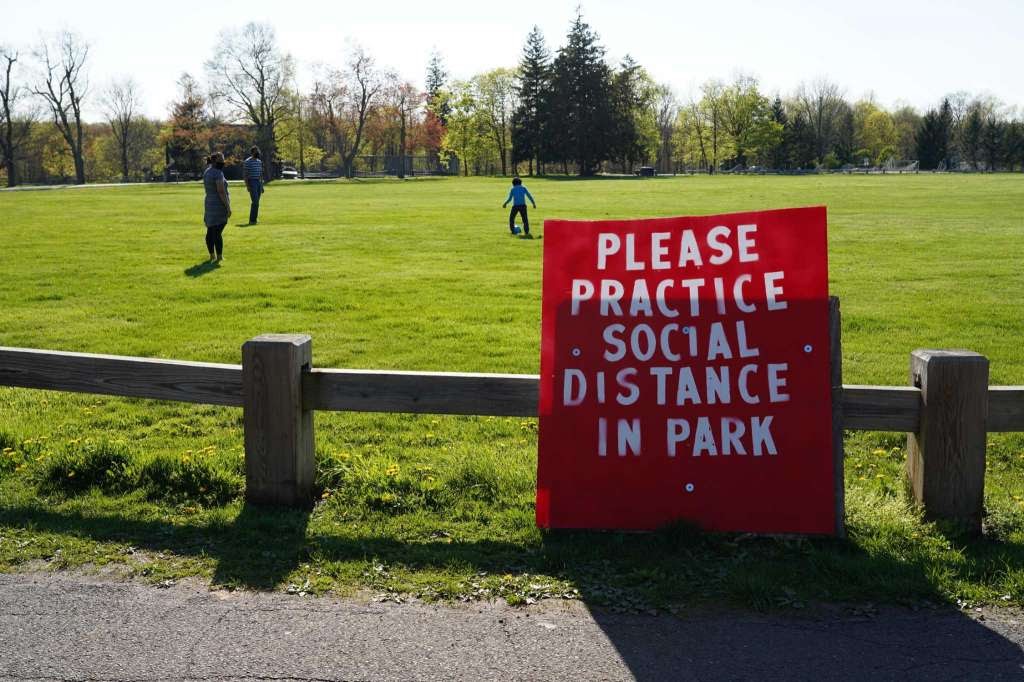
Courtesy of Grace Duffield for Hearst Connecticut Media
When the COVID-19 pandemic hit, many found themselves locked within the four walls of their homes, closed off from the outside world. With gyms closed and popular workout classes canceled, the world resorted to the most basic form of exercise: running.
The high intensity of running allows it to be one of the most efficient calorie-burning exercises. A 140-pound person burns about 13.2 calories per minute running, according to a report from the American Council of Exercise. So, a quick 30-minute run will burn an estimated 396 calories.
Despite the efficiency of running, many people lean towards more innovative types of workouts, such as SoulCycle, pilates, or CrossFit. But with the doors of these facilities shut for the foreseeable future, former gym-goers began hitting the trails, joining scores of longtime runners who’ve welcomed them with open arms.
“Running is one of those sports that anyone of any age or level can do, and personally, I feel as though it is a great way to stay active and have time for thought,” Mari Noble, 2019 CT Cross Country State Champion, said. “I love that more people are beginning to see how fun it is!”
When talking with the running community, many will emphasize how tight-knit such a diverse group can be. Many runners were able to lean on each other for support and motivation.
“Even if my friends and I had to run on opposite sides of the road or Facetime to fill in each other, I found that by encouraging one another, we were able to continue training,” said Noble.

Waveny park in New Canaan, CT, typically hosts cross country meets in the fall. Photo: Lauren Doherty
Social media and popular running apps saw a surge in downloads during quarantine. One such app, “Couch to 5k”, had more than 858,000 downloads between March and June, a 92% increase from the same period last year.
“Social media, particularly Instagram, connected the running community,” Heather Pech, accomplished marathoner and coach, said. “Our stories got told, and it empowered and inspired new runners to join us. My coaching business has grown dramatically, even with no races and no championship seasons on the horizon.”
The evergrowing running community seemed to become filled not only by those substituting running for their daily workout classes, but by newcomers who found themselves crawling with the need for fresh air during the quarantine. Caroline Vincent, a junior at New Canaan High School, faced such a situation.
“I have never been a runner,” Vincent said. “In fact I have always been very anti-running, but for some reason I didn’t stop [running], it helped to give my days consistency and purpose.”
It is without question that as the quarantine timeline expanded, the patience and mental health of many began to dip. Veteran and novice runners alike turned to the sport as a source of stability and solace — a way to continue working towards existing goals and fill empty time with new ones.
Noble emphasized that all she can do is “control the controllables”. “By running, I was able to maintain my physical and mental health by continuing to make progress in my training even when the entire world seemed as if it was on pause,” said Noble. “I was still able to grow as an athlete and as an individual.”
For many competitive runners, the cancellation of races allowed them to take a step back and enjoy the process to set new goals. “Running has always been my time to reflect, ruminate, and resolve,” Pech said. “It is more important than ever to focus on the intrinsic reasons that we run, ‘the why’ behind our running.”
With the structure of a typical school day gone, Vincent found herself eager to fill her time with something productive. “I didn’t start running with the hope to get faster or to be able to run a certain distance, but as I began pushing myself I began setting goals,” Vincent said.
Pech has been working hard to help her athletes reach their goals during quarantine and prepare for when racing begins. “Stay present, stay committed to the work,” Pech said. “Wake up and look at today’s session and say #getafterit. When the races open, and they will, we will be ready!”






